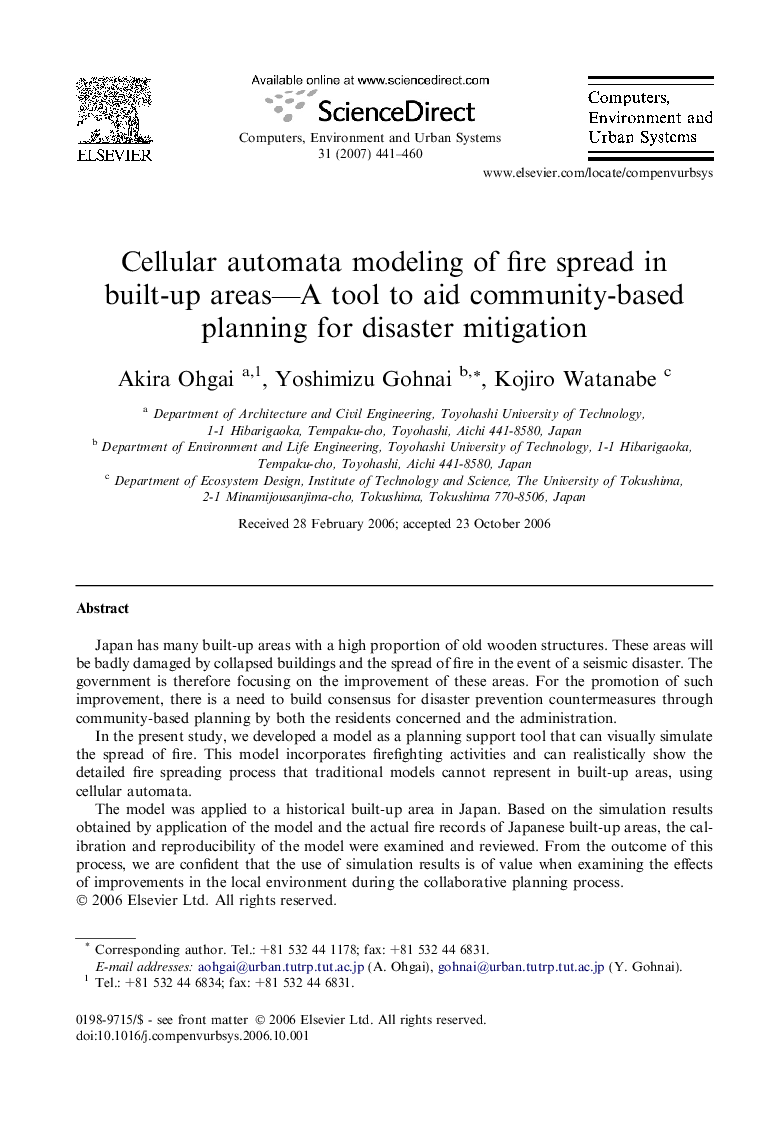| Article ID | Journal | Published Year | Pages | File Type |
|---|---|---|---|---|
| 506508 | Computers, Environment and Urban Systems | 2007 | 20 Pages |
Japan has many built-up areas with a high proportion of old wooden structures. These areas will be badly damaged by collapsed buildings and the spread of fire in the event of a seismic disaster. The government is therefore focusing on the improvement of these areas. For the promotion of such improvement, there is a need to build consensus for disaster prevention countermeasures through community-based planning by both the residents concerned and the administration.In the present study, we developed a model as a planning support tool that can visually simulate the spread of fire. This model incorporates firefighting activities and can realistically show the detailed fire spreading process that traditional models cannot represent in built-up areas, using cellular automata.The model was applied to a historical built-up area in Japan. Based on the simulation results obtained by application of the model and the actual fire records of Japanese built-up areas, the calibration and reproducibility of the model were examined and reviewed. From the outcome of this process, we are confident that the use of simulation results is of value when examining the effects of improvements in the local environment during the collaborative planning process.
